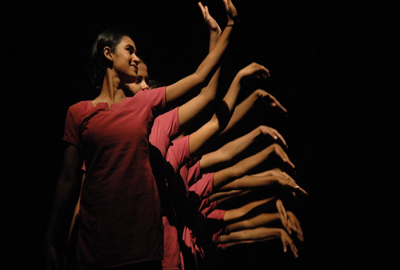 New Delhi:
New Delhi: Using the rhythm of dance as a potent tool to overcome, address and heal the scars of violence and abuse seems to be the new mantra to beat the demons of unpleasant memories.
Paving way for such an example is New York-based 'Battery Dance Company' that has collaborated with 'Kolkata Sanved' an NGO which uses Dance Movement Therapy (DMT) to address the issue of sexual violence.
The collaboration performed on the theme of 'Dancing to Connect' here recently with 25 young survivors of sexual violence, trained by professionals of both groups.
"It was interesting that a bunch of young children who had every reason to distrust people due to the turbulent episodes they went through in their lives; instilled confidence and trust in us. The dance movements we designed for the performance were based on the inputs and narration by the young survivors," says Jonathan Hollander Artistic Director and founder, Battery Dance Company.
Seven trainers from Battery Dance Company and Kolkata Sanved trained a troupe of girls who have survived a myriad of hardships including gender violence, human trafficking and homelessness, in a matter of seven days for the performance; shares Sohini Chakraborty, founder of Kolkata Sanved.
"The effort was all about instilling a sense of self esteem and dignity in the hearts of the children. While the dance performance was crucial, it was also about the behind-the-scenes, where the children form a strong bond with the ones who train them and speak their mind and heart out.
The dance moves we created tell the story of each one of the survivors," says an enthusiastic Sohini.
As a trained dancer herself, Sohini feels that dance can heal the body, mind and soul; and address the overlooked areas of physical, emotional, social and cognitive aspects of a survivor.
"For the past 10 years, we have been employing 'dance therapy' as an alternative to counseling and rehabilitation. Dance helps in a holistic recovery for a person who has survived a traumatic experience," she says.
"Violence against women is a global challenge. We often fail to look at the core issues of the victims. They need a physical, emotional, social and cognitive recovery; that can be effectively addressed by dance," Sohini adds.
Jonathan, who has choreographed more than 75 works in major theatres and festivals in the United States, Africa, Middle East, Asia and the Carribean; hailed the trend of the victims coming forward and braving all odds to tell their tales.
"The performance we put out was completely the 'voice of the children'. The young survivors had an important say in the dance moves, music and everything else. There was no alien vocabulary, in other words, the act was completely crafted by the survivors who impressed us with their spirit," says Jonathan
The choreographer also appreciated the collaboration with an indigenous group like Kolkata Sanved whom he admits provided the "knowledge of territory" to the foreign group.
"We could not have presented a beautiful act without the help of Kolkata Sanved, who helped us a lot in understanding the territory," says Jonathan.
Set in contemporary styles, the performance 'Dancing to Connect' displayed unique blend of abstract themes in modern backgrounds.
Noted danseuse Mallika Sarabhai had a special appearance and performed on her work 'I Am Not That Woman', a haunting melody set on the celebrated Urdu poet, Momin's ghazal, 'Tumhe yaad ho kin a yyad ho' (Do you remember, or not?).
 New Delhi: Using the rhythm of dance as a potent tool to overcome, address and heal the scars of violence and abuse seems to be the new mantra to beat the demons of unpleasant memories.
New Delhi: Using the rhythm of dance as a potent tool to overcome, address and heal the scars of violence and abuse seems to be the new mantra to beat the demons of unpleasant memories.